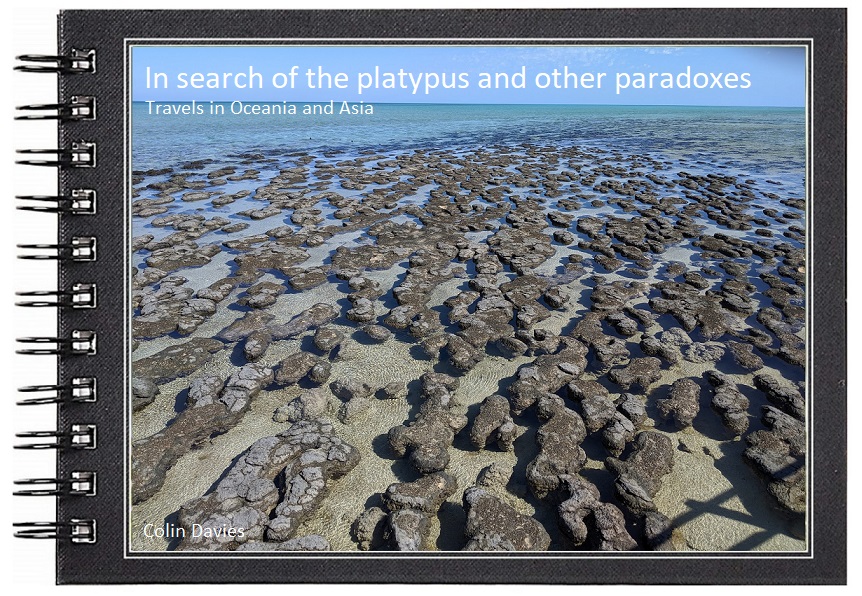 |
| Royal and yellow-billed spoonbills |
I've just spent two full on birding days at Werribee Water Treatment Plant, and what an amazing place it is. An absolute essential visit for any serious birder visiting Melbourne. You may think that you don't want to spend your time in Australia at a sewage works, but it's actually nothing like that, in fact it's probably one of the best places I've ever been to birding, on a par with Doñana in Spain. Like Doñana, it's not so much the individual species that make it so special, it's the sheer number of birds. During my visits for example, whiskered terns were everywhere, over every lake, pond, ditch, marsh and even field where they hawked for insects and in amongst them was a scattering of white-winged black terns. Meanwhile on the water was a host of birds, with at least 4000 pink-eared ducks and probably similar numbers of grey and chestnut teal. Sharp-tailed sandpipers were everywhere, on the mud as you would expect, but also in the grass and on the road, I put up countless birds as I was driving around. A breathtaking place. You can contact Melbourne Water for a day permit and key.
Yellow-billed spoonbill.
Brolga is one of two species of Australian crane. I'm pretty sure that this is a female due to its small dewlap, the loose skin hanging under its neck. This photo was taken on my first visit to the site.
The following day I returned to the same lake and found presumably the same bird looking like it was sitting on a nest. Either that or it's standing in a very deep hole!
White-necked heron.
Great white egret.
Since I first saw pink-eared ducks in Port Lincoln they have become a firm favourite of mine.
Three birds look great in flight, but 4000 in flight is something else!
Another species which I first saw at Port Lincoln, this is a male musk duck. Other ducks present included 100 blue-billed ducks which is the Australian equivalent of ruddy duck, Pacific duck, thousands of chestnut and grey teal, Australian shovelers and over 500 Australian shelduck.
Whiskered terns hawking for insects over what appears to be a field of rape.
One of the highlights of the visit was the large numbers of whiskered terns, easily 2000 birds across the site I would say, and notably they were all in breeding plumage which is not surprising because they do breed in Australia and this is the southern hemisphere spring.
In amongst the flocks of whiskered terns there were a few White-winged black terns, and these were all in non-breeding plumage. Unlike the whiskered tern, this is a northern hemisphere breeder and as such is now in it's autumn and therefore is in non-breeding plumage.
As you might expect, there are a lot of waders here, with larger waders including around 2000 red-necked avocet, 1000 white-headed stilt and 3 banded stilts. Also Australian pied oystercatcher and masked plover.
This greenshank had two leg flags.
I found several marsh sandpipers.
There was smattering of red-kneed dotterel across the site.
Red-necked stint and sharp-tailed sand pipers are common here, and these two Siberian species make a nice photograph with this red-kneed dotterel.
A flock of red-necked stints.
This sharp-tailed sandpiper appears to have staining on it's breast.
Curlew sandpipers and sharp-tailed sandpiper.
Australian swamphen with sharp-tailed sandpiper and curlew sandpipers.
Australian grebes, very like the European little grebe. This was by far the rarer of the two species of grebe I saw, hoary grebe is numbered in the thousands.
Raptors are well represented, this is brown falcon.
There were plenty of black kites and a few whistling kites. Other raptors seen include swamp harrier.
About the commonest small bird was white-fronted chat.
Female Horsfield's bronze-cuckoo. The bronze-cuckoos are amongst the loveliest of Australian birds in my opinion.
Fairy martins, one of three species of hirundine present.
Superb fairy wrens were common across the site.
Not exactly a sewage works.












































No comments:
Post a Comment